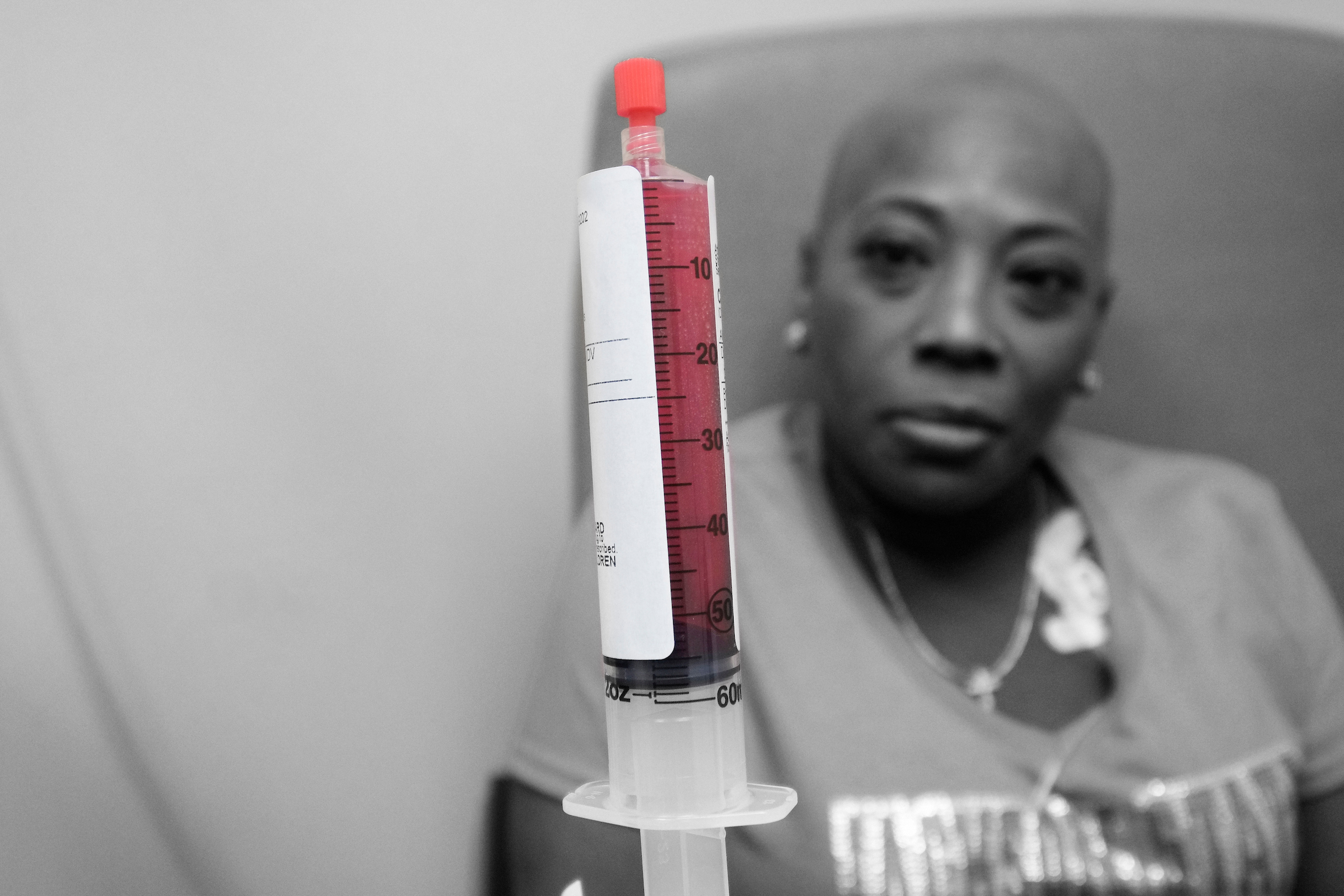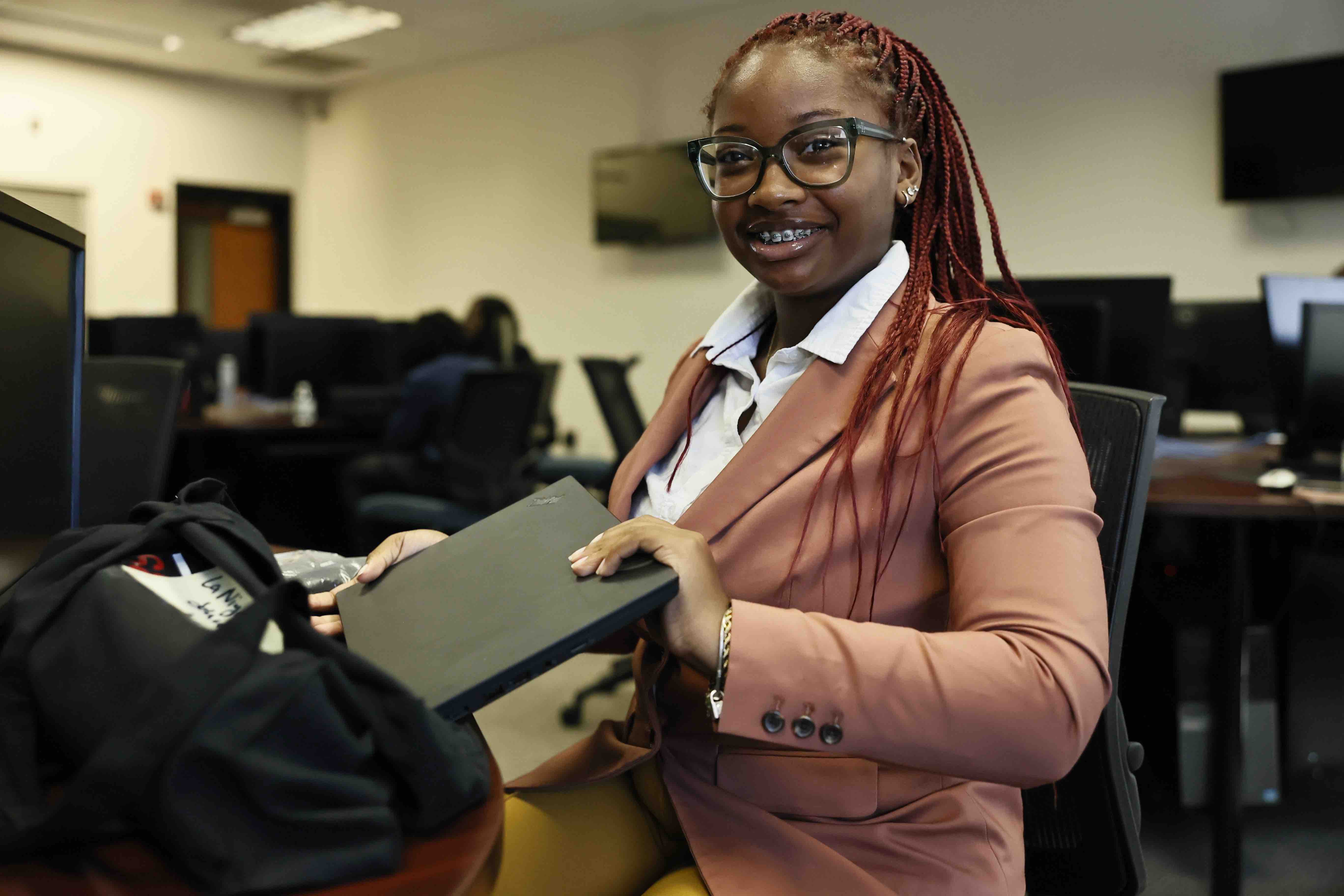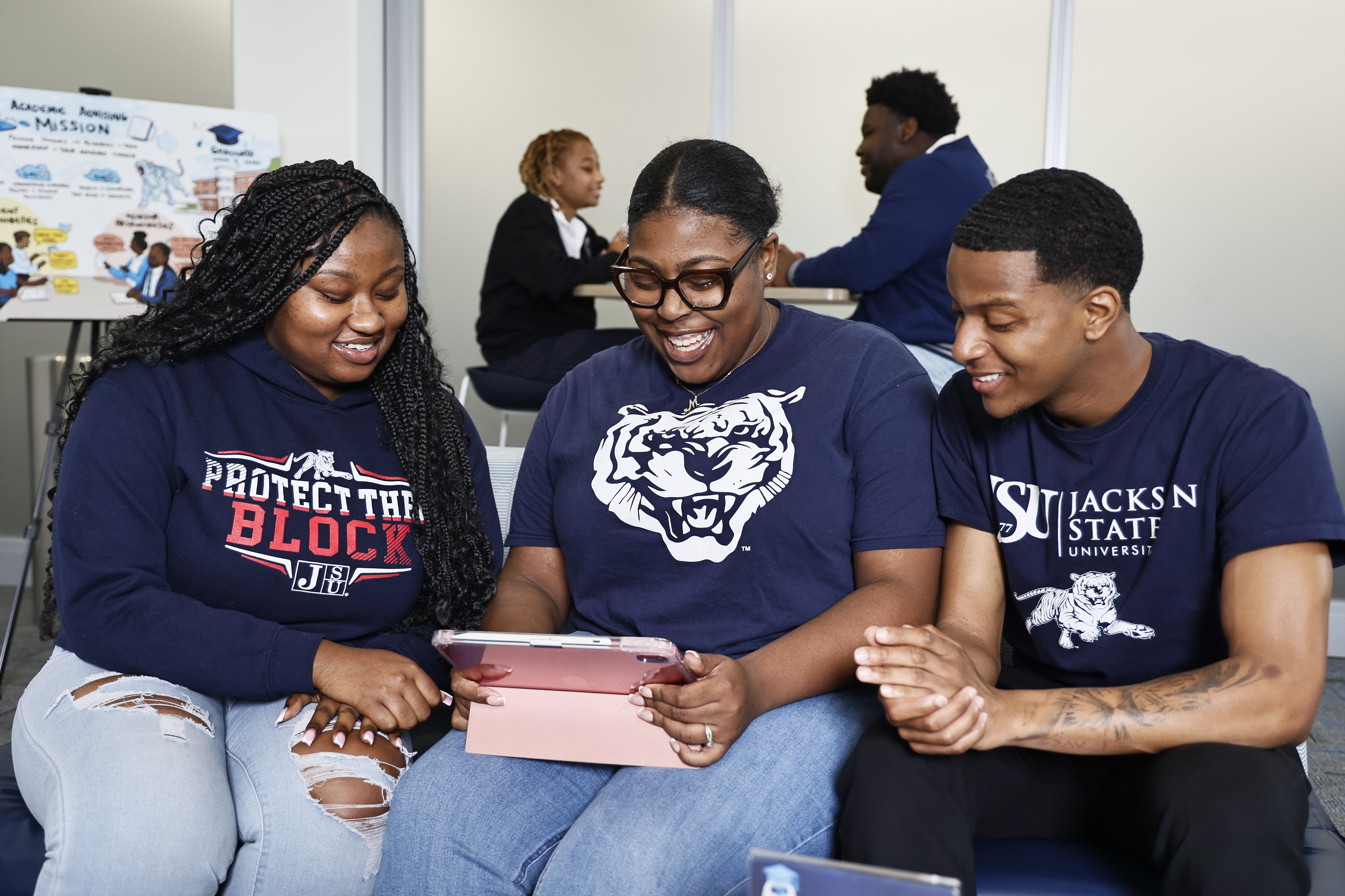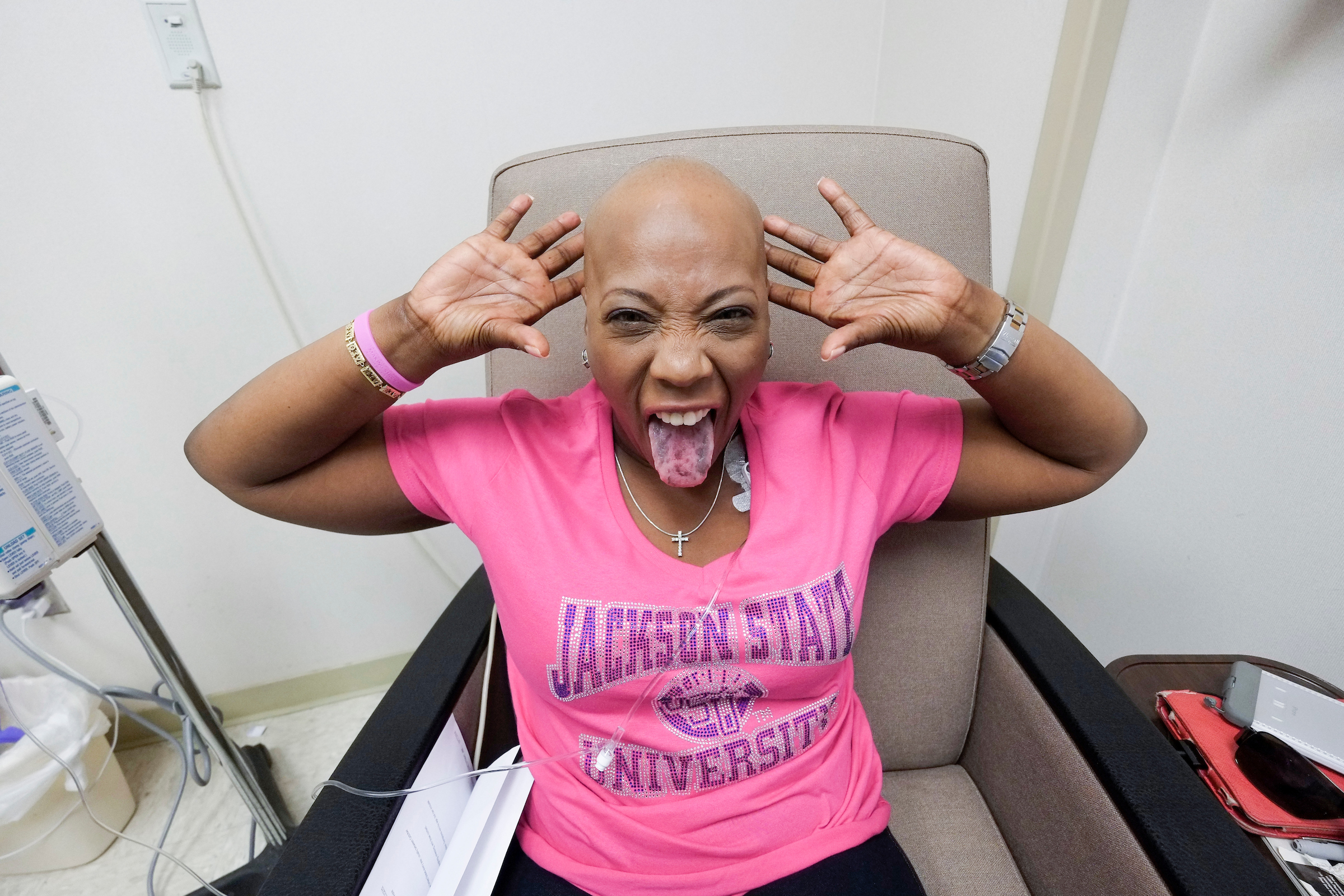
![]()
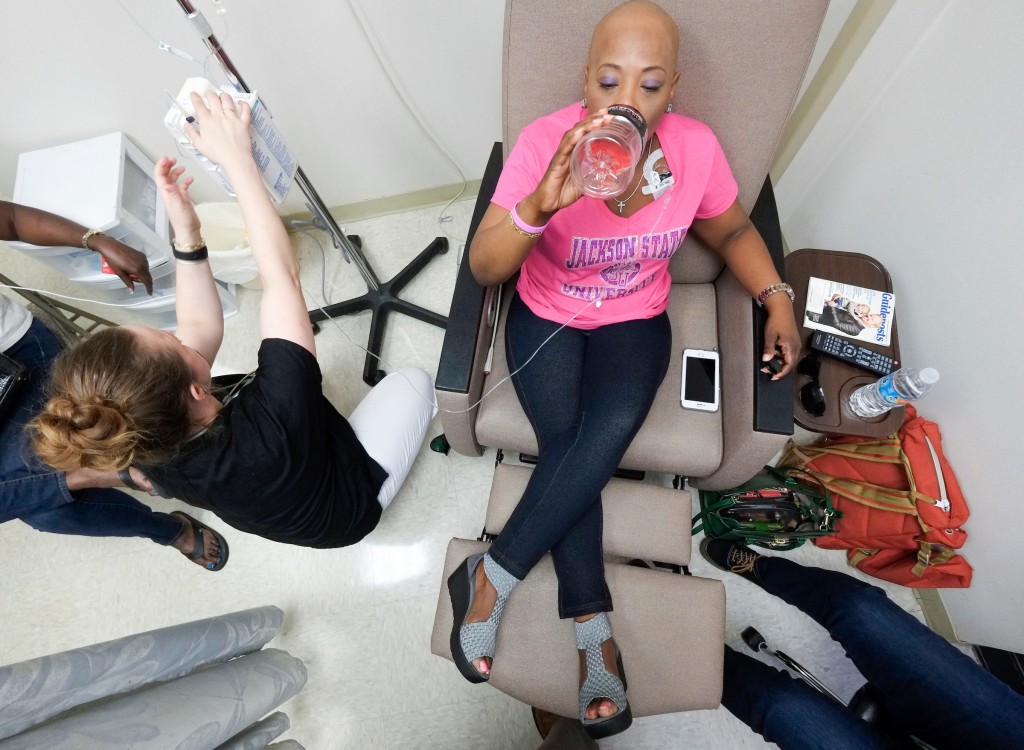
After dropping 40 pounds from exercising, WJSU veteran broadcaster Gina Carter-Simmers revved up her car’s engine for a shopping spree for new clothes; however, a sudden call from her doctor suggesting she may have breast cancer brought her plans to a screeching halt.
On the other hand, it was a green light for the Jackson State University station general manager – with an aggressive form of Stage 3 cancer – to become the architect of an upcoming photo exhibit. An extraordinary museum showcase in February will depict the scars of current patients and survivors in the battle to beat cancer.
Carter-Simmers has triple-negative breast cancer, which is generally more responsive to chemotherapy. This means the offending tumor is negative for estrogen, progesterone and human epidermal receptor 2 (HER2), which is a less invasive growth protein. Her isolated cancer was anchored in her lymph nodes and right breast, forcing her to undergo chemotherapy, radiation and a mastectomy.
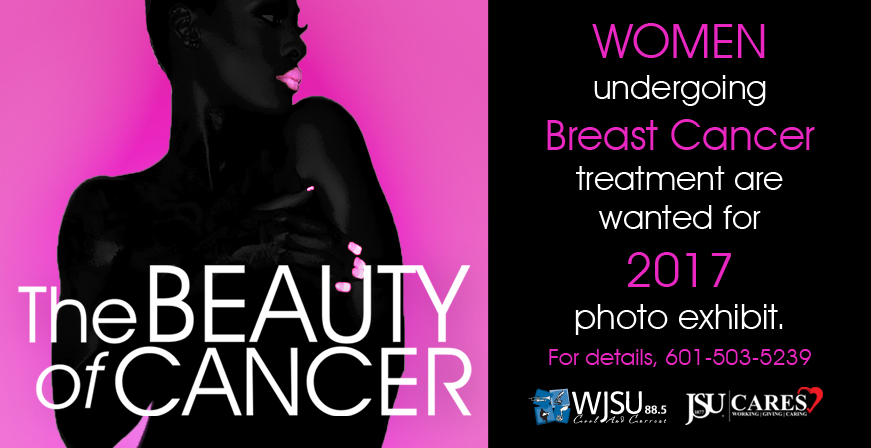
[dropcap]W[/dropcap]HEN she thought her life was over, one of her doctors, a surgeon, told her not to be discouraged because she would be 100 percent cured. But he cautioned that “you’re in for the fight of your life for an entire year” – a prospect that left Carter-Simmers totally dismayed. Hoping to inspire his patient, the physician presented her with a crucifix and confessed that he was a survivor of kidney cancer.
Meanwhile, the planned photo display will consist of breast cancer survivors. It will be called “The Beauty of Cancer,” which Carter-Simmers calls a misnomer because “there’s nothing really beautiful about cancer because of the physical and mental scars it leaves,” she said. “The exhibit will showcase mastectomy scars by brave women who want to show them. You’ll see somebody’s tongue, feet or hands discolored from chemo; you’ll also see radiation burns,” said Carter-Simmers, who also endured many of these after-effects.
By this month, she said she hopes to have 28 women committed to the project. She’s more than halfway there. “There is some reluctance when you’re losing your hair because you don’t feel beautiful. She expects to unveil the exhibit in February during National Cancer Prevention Month at an event inside the Mississippi Museum of Art in downtown Jackson as part of its display “The Art in Us All.”
While the exhibit will include women of different races, ages and ethnicities, she said she wants images to be visually stunning. “However, I don’t want them to be pretty because cancer isn’t pretty.”
Ultimately, the reason behind the project is that she wants women to be “scared straight so that they will get regular mammograms and conduct self-exams every month.” With black women suffering a high mortality rate, she especially “doesn’t want what I’m going through to happen to my sister, my aunt, my grandmother.”
[pullquote]”The ‘C’-word is not a death sentence. How you survive is through the support of family, friends and caregivers and that you speak bravely and candidly about cancer. Many women hide their truth – even me for a while.” — WJSU general manager Gina Carter-Simmers.[/pullquote]She learned of a genetic link to breast cancer after digging into her family’s lineage. Her deceased grandfather’s four sisters had battled the disease. “The lesson in this for other people is to know your family history by calling relatives, opening dialogue with folks you may not have spoken to in years. Just pick up the phone,” she said.
Furthermore, Carter-Simmers said, “We’re so plugged into other forms of technology that we’re not phoning our sisters, brothers, uncles, cousins. But, now, my family is doing that. I haven’t been that close to my father’s side because we’re in two different states. But now it seems we talk several times a week. My entire family is supportive of me in this journey. We text each other every day. My grandmother will FaceTime me daily because she always wants to see what I look like or what I’m wearing because, like me, she’s pretty sassy herself.”
Carter-Simmers admitted that she neglected her routine check with her physician earlier this year and discovered her lumps only after her huge weight loss. The upside is that by dropping those extra pounds she was able to notice the lumps under her arms. Still, she didn’t visit her physician for another month, but her first chemotherapy treatment occurred shortly thereafter on Aug. 26.
Nevertheless, she said, “There is some beauty in my flaws and the traits that cancer bring out in us. Truth is, there’s nothing more beautiful than confident women who can laugh at themselves.” After losing her hair, Carter-Simmers says she often feels awkward when her eyebrows aren’t penciled in or when she’s not wearing a wig, although “everyone says my head is perfectly round for baldness.”
Still, getting to this point in her life of becoming an advocate against breast cancer was far from easy.
[dropcap]H[/dropcap]ER initial denial was actually the beginning of a dreadful experience.
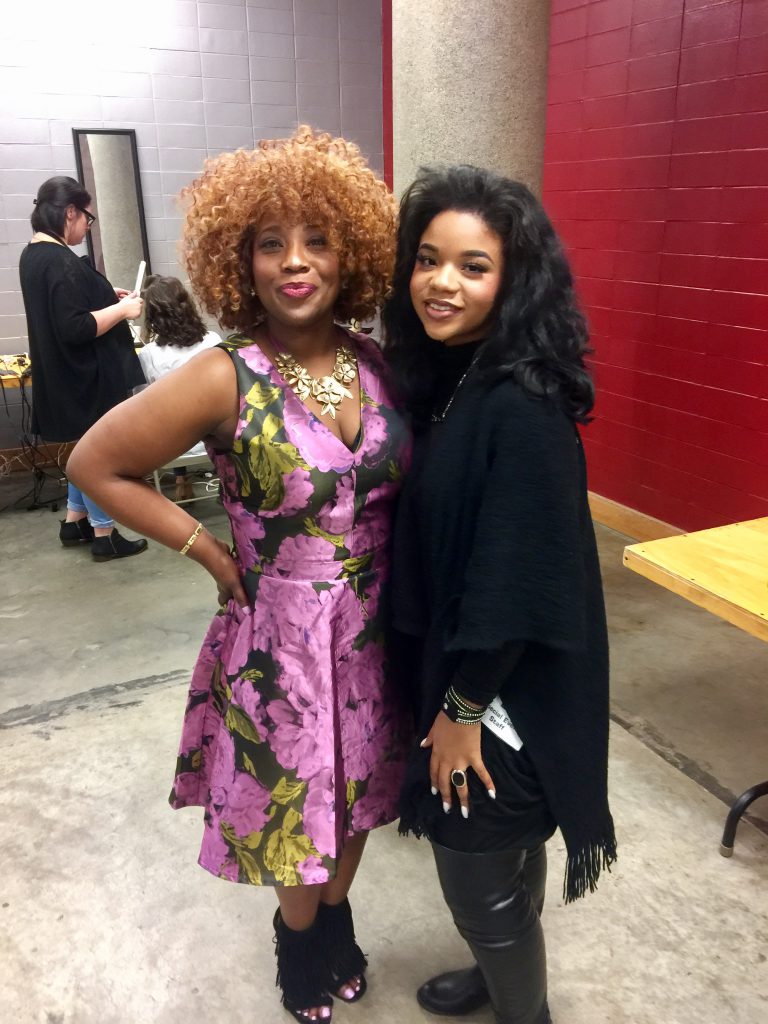
When a physician first revealed having received preliminary results from Carter-Simmers’ mammogram and ultrasound, the response from the longtime JSU broadcaster was simply, “Uh-huh, Uh-huh,” she said, while trying to convince herself that she was still about to go shopping.
The doctor continued with her warning: “The results indicate highly suspicious for malignancy tumor.”
Still nonchalant, Carter-Simmers simply said, “OK,” and then proceeded to hang up the phone.
However, before she could end the call, the doctor quickly became more forceful and direct, saying, “This means cancer.”
That terse response was immediately followed by a pregnant pause. Still, unwilling to accept the news, Carter-Simmers said, “OK,” and quickly hung up the phone. After meditating for a second to allow the message to sink in, thunderstruck Carter-Simmers “screamed to the top of my lungs.” In her office she struggled to recount this emotional story. Her body trembled, her lips quivered, tears flowed and her voice was barely audible as she revealed how “that day was so horrible.”
Still she dismissed the diagnosis, trying to convince herself that the lumps under her arms resulted from a recent sinus infection. But deep down, she knew that notion was farfetched because she had noticed on several occasions “blood seeping from my breasts, and the lumps were rock hard.”
[dropcap]T[/dropcap]HE revelation of her breast cancer occurred just one day before she was scheduled to co-host a campus event to welcome new and returning faculty and staff to the start of the fall semester in August. Her co-host, fellow broadcaster and JSU colleague Rob Jay, asked about her doctor’s appointment. However, seconds after she told him that she was diagnosed with breast cancer, they were asked to quickly take the stage to start their part of the program.
“Just like that, 5-4-3-2-1, it was lights, camera, action,” said Carter-Simmers, who gave no indication to hundreds in the audience that anything was wrong with her physically or emotionally. Needless to say, Rob Jay was thoroughly impressed with his co-host’s display of her usual stamina, engaging personality and humor. Their segment went off without a hitch, with both singing and cracking jokes and giving the audience an icebreaker to remember.
“That performance helped start my journey on a positive note,” Carter-Simmers said. She especially thanked her brother for unintentionally outing her battle with cancer on Facebook when he posted an image of her preparation for chemotherapy in August. Apparently, her brother erroneously assumed his sister had already made her diagnosis public.
[pullquote align=”right”]While co-hosting during the faculty-staff seminar in August, Carter-Simmers gave no indication to hundreds in the audience that anything was wrong with her physically or emotionally – even though she just had discovered her breast cancer diagnosis the previous day.[/pullquote]As she sat in a recliner for treatment at the Hederman Cancer Center on North State Street, her phone began “blowing up with people saying, ‘Ohmigod. I didn’t know you had cancer.’ I was like, ‘How did you know?’ ” That’s when she learned about the innocent exposure by her brother.
Carter-Simmers quickly recovered from her brother’s gaffe. “I think I needed that push. I’m OK with it, especially if it’s going to save lives.”
Aside from her caring family in this battle, she said she really appreciates her co-workers because “they’ve signed up to take me to chemotherapy. Some have picked up medicine for me; some have come to my house with dinner or just to talk or FaceTime me during my chemo treatment. I thank God that I got my diagnosis while living in Jackson and working at JSU,” said Carter-Simmers, who currently works an abbreviated schedule at JSU while on the road to recovery.
Now, she said she wants to “show people that the ‘C’-word is not a death sentence. How you survive is through the support of family, friends and caregivers and that you speak bravely and candidly about cancer. Many women hide their truth – even me for a while,” she said. “I was wearing wigs because I didn’t want people to treat me like I’m sick. The reality is that I am sick. I have cancer. … I’m now slowly easing myself back into who I was before cancer.”
As creative director of the planned photo exhibit, Carter-Simmers said she is really hyped about the future, and not just for her own survival and longevity. “My doctor says I’m now a breast cancer advocate. That’s part of my new role, and I’m seriously taking that on.” She’s also working on a documentary that will be broadcast in real time. She’s hoping networks such as TLC and PBS will air the program.
“With so many women talking about breast cancer, we think we’re shrinking those numbers. I’m hoping the same positive result will occur with the upcoming photo exhibit, ‘The Beauty of Cancer,’ ” Carter-Simmers said, “for denial can be unnecessarily fatal.”
